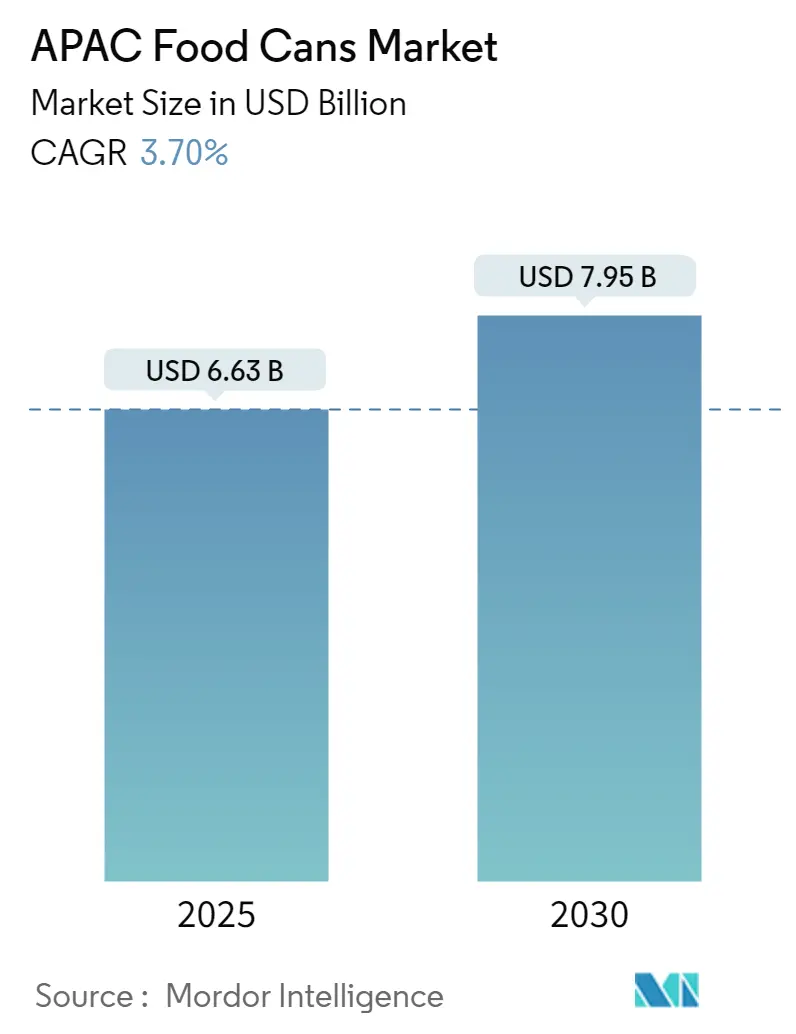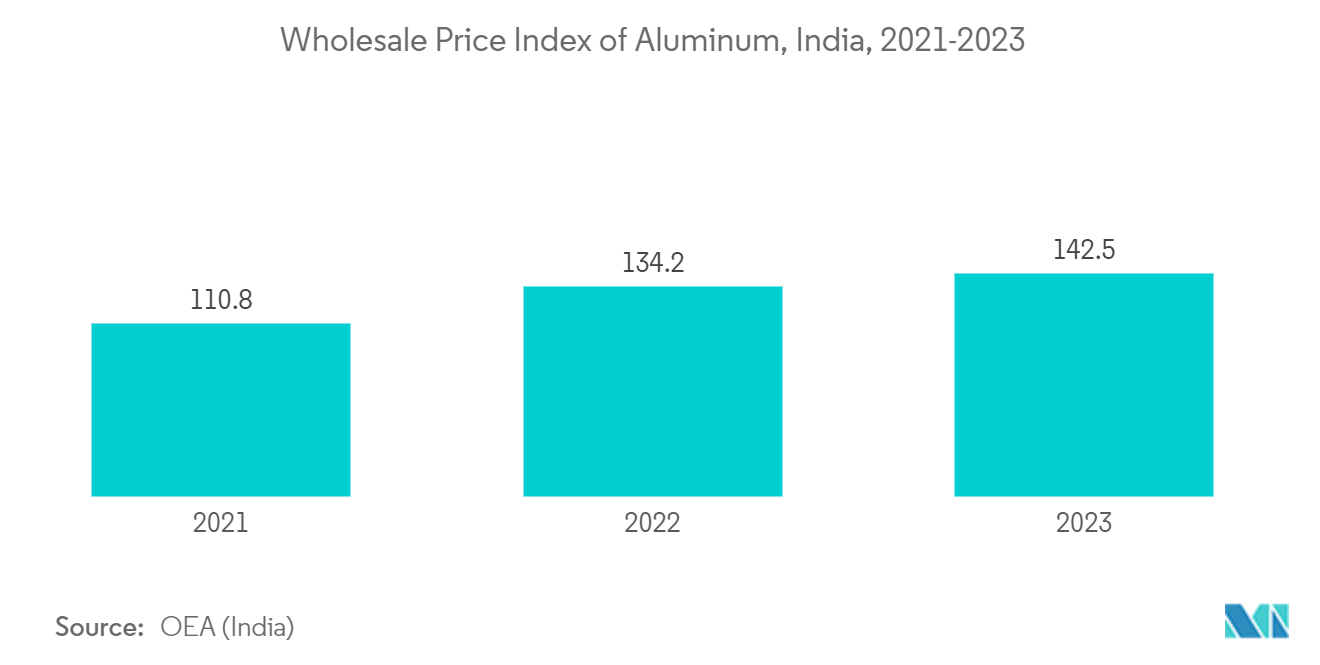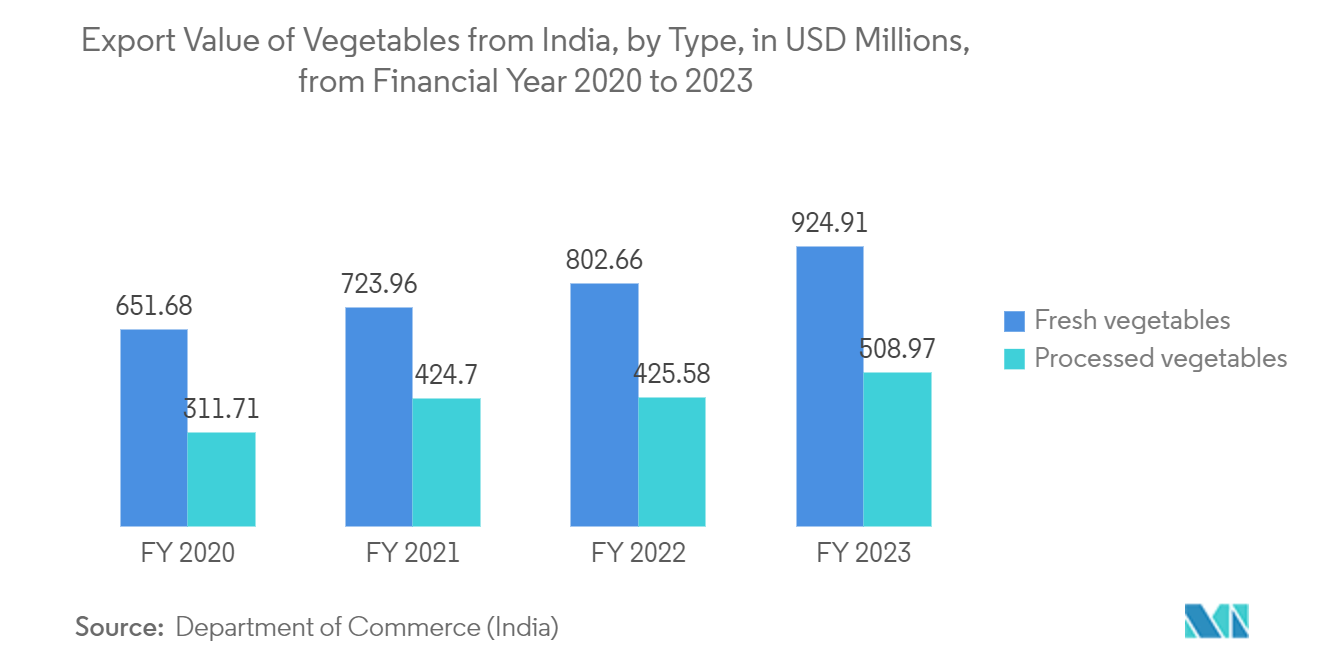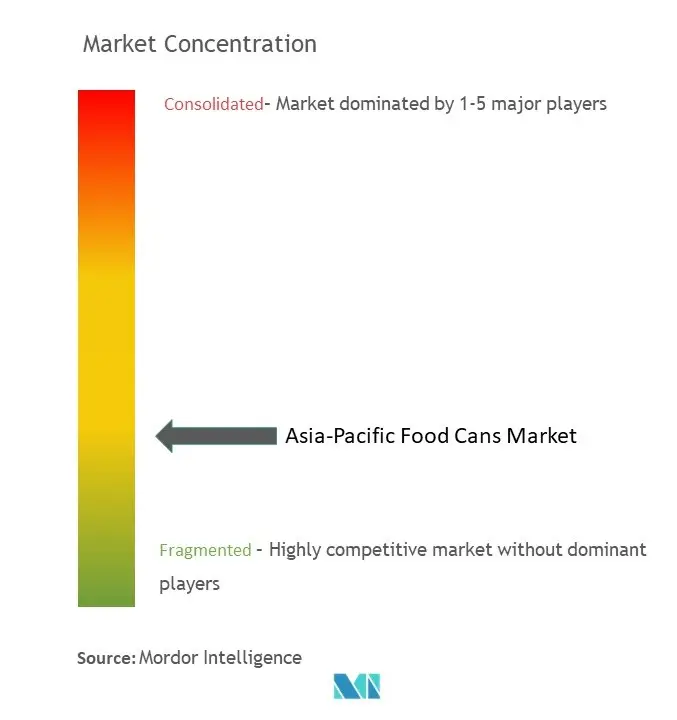APAC Food Cans Market Size and Share

APAC Food Cans Market Analysis by Mordor Intelligence
The APAC Food Cans Market size is worth USD 6.63 Billion in 2025, growing at an 3.70% CAGR and is forecast to hit USD 7.95 Billion by 2030.
Metal cans play a vital role in preserving food without microbiological spoilage. The cans are corrosion-resistant and have the extended shelf life of any package. Its advantages include stiffness, stability, and strong barrier qualities.
- One of the primary drivers of the market is an upsurge in demographic population, increased consumption of canned food to account for the busy and modern lifestyles, increasing demand for easily accessible and transportable food, the increased necessity to expand the shelf life of food, and an increasing number of pet owners demanding canned pet food.
- According to the International Monetary Fund, solid growth in emerging markets in Asia is anticipated to continue. According to the IMF, annual Gross Domestic Product (GDP) growth of 4.6% for emerging and developing Asia in 2022 will be increasing to 5% in 2023. By investing in research and development, boosting entrepreneurship, and strengthening digitalization, Asian countries can foster sustainable, long-term growth. Such growth in the economies would further leverage the canned food market as more individuals will be working and prefer ready meals.
- Consumer trends, such as a choice for small-size and multi-pack packaging formats, support the volume growth of aluminum cans, especially for the ready-to-eat food segment. Hence, most of the companies across the emerging regions offer mini-cans, which usually contain smaller volumes of products at less cost than traditional canned products.
- For instance, food innovations in canned seafood in Southeast Asia are witnessing growth. As a seafood provider, Thai Union announced it would launch a plant-based canned tuna per the rising consumer demand.
- The presence of alternatives like plastic packaged food, which is cost-effective but has a lesser shelf life, restricts the market's growth. Despite not being durable, plastics are still gaining demand over glass and metals in terms of energy consumption, reliability, and sustainability. Also, the material is flexible and can be molded into any shape as required.
APAC Food Cans Market Trends and Insights
Aluminum Cans to Witness Growth in the Market
- Aluminum is the primarily used material for manufacturing cans as it is infinitely recyclable. It provides a superior metal canvas for 360-degree labeling and helps to protect the flavor and freshness of food packed inside, which manufacturers mostly prefer.
- The demand for aluminum cans is increasingly driven by manufacturers of ready-to-eat food for storage as they help improve packing efficiency in terms of lower transportation costs and significant brand engagement benefits. Aluminum can sales are increasing due to consumer trends such as a preference for smaller, multi-pack packaging formats, particularly in the ready-to-eat food segment. As a result, many companies offer mini cans with smaller amounts of products that are typically less expensive than traditional cans.
- Recently, Ayam Sarl, a plant-based food company, has designed delicious products formulated by Asians for Asians in formats that its customer base could use day-to-day in their preferred traditional dishes without compromising taste or convenience. Hence, the company launched Yumeat. While many plant-based meat and seafood products occupy supermarkets' chilled and frozen sections, the company went a different way for its yumeat products. It launched shelf-stable cans that do not require refrigeration. This meant the company could outperform its competitors in two key areas: convenience and affordability. Such innovations in the region would leverage the market for food cans.
- Moreover, the wholesale price index of aluminum across India in 2023 is 142.5, according to OEA India, and it was 134.2 in 2022. Also, from being primarily a consuming country, Indonesia is now spreading its wings as a key exporter of cans in the Asian market. Indonesia exports aluminum cans to several countries, including Brunei Darussalam, France, Malaysia, Nigeria, Oman, Papua New Guinea, the Philippines, etc.

India to Gain Highest Growth
- The demand for canned food packaging in India has extended drastically, spurred by the fast growth in consumer markets, particularly in processed food. The packaging industry is driven by a rising population, increasing income levels, and changing lifestyles, which are anticipated to drive consumption across various sectors, leading to higher demand for packaging solutions. Moreover, demand from the rural sector for packaged products is fueled by the growing media penetration through the Internet and television.
- According to the Indian Institute of Packaging (IIP), packaging consumption in India has increased by nearly 200% in the last decade. Further, India is emerging as an organized retail destination in the world. The presence of e-commerce is expanding and is bringing about a revolution in the retail sector, driving the need for packaging. Therefore, organized retail services and the boom in e-commerce offer enormous potential for the future growth of retailing in India, which in turn is promoting the growth of the packaging sector. Such factors drive the food cans market in the country.
- According to the Ministry of Environment, Forest and Climate Change in December 2022, the Plastic Waste Management Rules, 2016, provide the statutory framework and the authorities for enforcement of the rules, including a ban on identified single-use plastic items. As sustainability has become a key concern, packaging industry end-users, including online marketplaces, have switched to sustainable solutions. Such a ban on single-use plastics would leverage the country's metal cans market.
- The Ministry of Food Processing Industries (MoFPI) is taking all measures to boost investments across the value chain. The food processing industry has a share of 12.38% in the employment generated in all Registered Factory sectors, engaging approximately 1.93 million people. Major sectors constituting the food processing industry in India are grains, sugar, edible oils, beverages, and dairy products.
- The food processing sector is driven by changing demographics and lifestyles, the availability of raw materials, and more. According to the Department of Commerce (India) ,In the fiscal year 2023, India's export revenue from fresh vegetables reached approximately 924 million U.S. dollars. In the same year, processed vegetables were valued at almost 508 million dollars. The country's processed food sector is booming with opportunities, and the government is also focused on sustainable packaging solutions, driving the market growth over the forecast period in the country.

Competitive Landscape
The competitive rivalry in the Asia-Pacific food cans market is high owing to many key players continually trying to gain maximum market share through collaborations, investments, and more. Some of the major players are Crown Holdings, Inc., Ball Corporation, Visy Industries, Toyo Seikan Group Holdings, Ltd., and more.
In February 2023, Toyo Seikan Group Holdings, Ltd. and UACJ Corporation agreed to jointly study ways to promote the horizontal recycling of aluminum cans further. This business partnership aims to develop and commercialize aluminum cans with added environmental value by leveraging the technologies and know-how of both companies.
APAC Food Cans Industry Leaders
-
Crown Holdings, Inc.
-
Ball Corporation
-
TOYO SEIKAN GROUP HOLDINGS, LTD.
-
CPMC Holdings Limited
-
Sonoco Products Company
- *Disclaimer: Major Players sorted in no particular order

Recent Industry Developments
- June 2023 - Ball Corporation showcased its latest aluminum can and bottle portfolio at the BevNET Live Summer 2023 from June 14-15 in New York City. Attendees for BevNET Live will learn about Ball's range of "slim" can capabilities, including new supply locations for the 5.5oz, 6.8oz, 8.4oz, and 250mL can sizes.
- September 2022 - Crown Holdings Inc. partnered with Ardagh Metal Packaging, the Can Manufacturers Institute, and more to host the first Global Aluminium Can Sustainability Summit. The Summit brought together more than 100 global attendees from different parts of the aluminum supply chain, such as primary material suppliers, packaging manufacturers, research organizations, and beverage brands. The Summit facilitated essential discussions to drive actionable progress toward the aluminum industry's sustainability goals.
APAC Food Cans Market Report Scope
Asia-Pacific food cans are among the best packaging options for the mobile lifestyle. Additionally, the affordability and recyclability of cans, the rising popularity of canned food, and the launch of new food products contribute to the market growth under study.
The Asia-Pacific food cans market is segmented by material type (aluminum cans and steel cans), by application (ready meals, powder products, fish and seafood, fruits and vegetables, processed food, pet food, and other applications), by country (China, India, Japan, South Korea, and Rest of Asia-Pacific). The market sizes and forecasts are provided in terms of value USD for all the above segments.
| Aluminium Cans |
| Steel Cans |
| Ready Meals |
| Powder Products |
| Fish and Seafood |
| Fruits and Vegetables |
| Processed Food |
| Pet Food |
| Other Applications |
| China |
| India |
| Japan |
| South Korea |
| Australia and New Zealand |
| By Material Type | Aluminium Cans |
| Steel Cans | |
| By Application | Ready Meals |
| Powder Products | |
| Fish and Seafood | |
| Fruits and Vegetables | |
| Processed Food | |
| Pet Food | |
| Other Applications | |
| By Country | China |
| India | |
| Japan | |
| South Korea | |
| Australia and New Zealand |
Key Questions Answered in the Report
How big is the APAC Food Cans Market?
The APAC Food Cans Market size is worth USD 6.63 billion in 2025, growing at an 3.70% CAGR and is forecast to hit USD 7.95 billion by 2030.
What is the current APAC Food Cans Market size?
In 2025, the APAC Food Cans Market size is expected to reach USD 6.63 billion.
Who are the key players in APAC Food Cans Market?
Crown Holdings, Inc., Ball Corporation, TOYO SEIKAN GROUP HOLDINGS, LTD., CPMC Holdings Limited and Sonoco Products Company are the major companies operating in the APAC Food Cans Market.
What years does this APAC Food Cans Market cover, and what was the market size in 2024?
In 2024, the APAC Food Cans Market size was estimated at USD 6.38 billion. The report covers the APAC Food Cans Market historical market size for years: 2019, 2020, 2021, 2022, 2023 and 2024. The report also forecasts the APAC Food Cans Market size for years: 2025, 2026, 2027, 2028, 2029 and 2030.
Page last updated on:
APAC Food Cans Market Report
Statistics for the 2025 APAC Food Cans market share, size and revenue growth rate, created by Mordor Intelligence™ Industry Reports. APAC Food Cans analysis includes a market forecast outlook for 2025 to 2030 and historical overview. Get a sample of this industry analysis as a free report PDF download.



